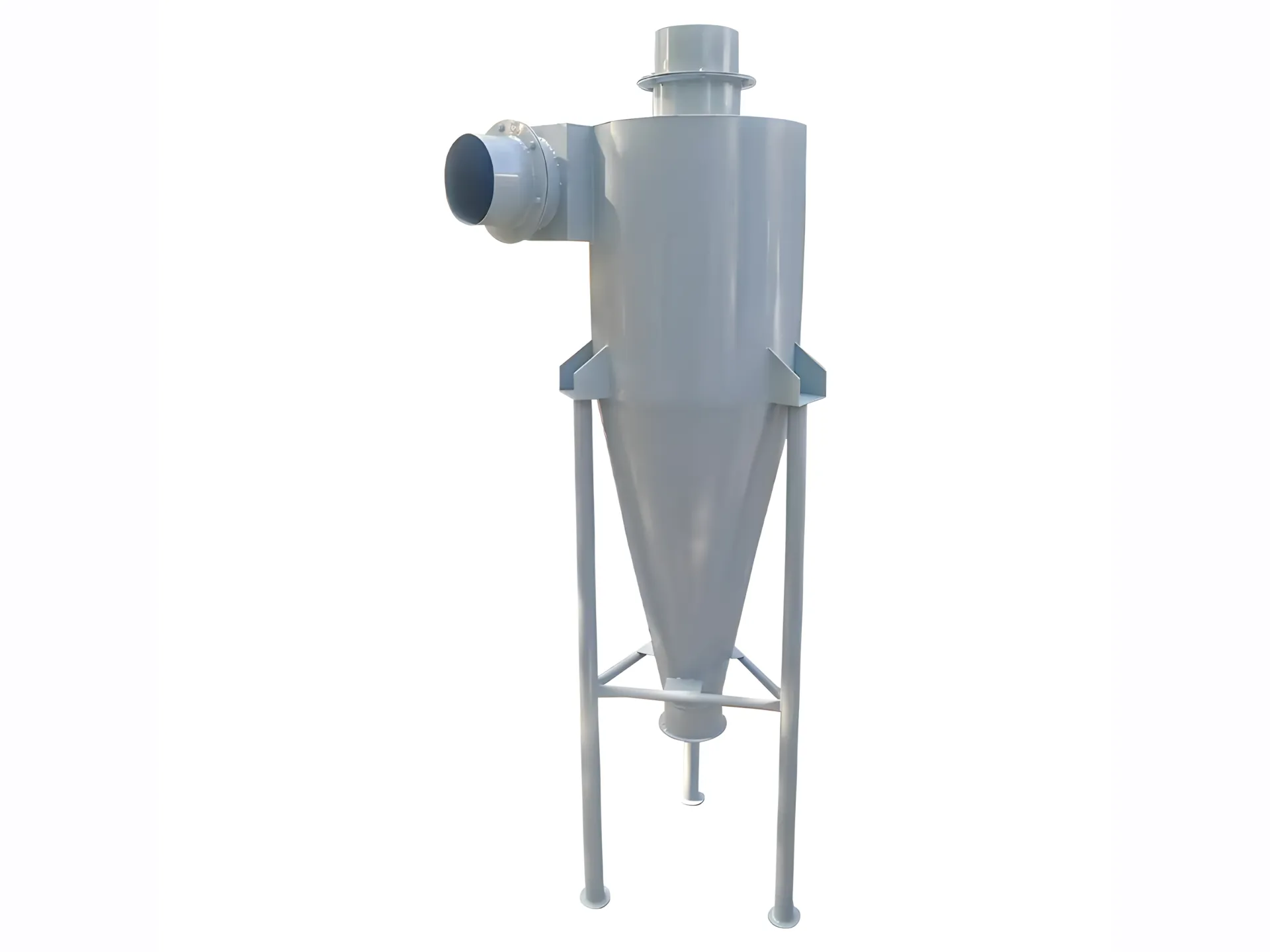Cyclone Separators in Plastic Recycling: Key Mechanisms & Applications
Cyclone separators are critical in plastic recycling for efficiently sorting and purifying materials by leveraging differences in particle density, size, and airflow dynamics. Here’s how they are tailored to meet industry-specific needs:
1. Role in Plastic Recycling
Cyclones address two primary challenges:
- Contaminant Removal: Separating dust, dirt, paper labels, or metals from shredded plastic flakes.
- Material Sorting: Dividing mixed plastics (e.g., PET vs. HDPE) based on density differences.
2. Working Principle (Plastic-Specific)
- Tangential Airflow Injection: Shredded plastic enters the cyclone, creating a high-speed spiral.
- Centrifugal Sorting: Heavier/denser materials (e.g., PVC, metals) are forced to the walls and drop into the collection hopper.
- Light Material Recovery: Lighter plastics (e.g., PP films, dust) ascend via the inner vortex and exit through the vortex finder.
- Multi-Stage Systems: Often paired with sieves or electrostatic separators for higher purity.
3. Key Applications
- Post-Shredding Cleaning: Removing contaminants like sand or glue from plastic flakes.
- Pelletizing Lines: Extracting dust and fines during extrusion to improve pellet quality.
- Density-Based Sorting: Separating PET (1.38 g/cm³) from HDPE (0.95 g/cm³) in mixed streams.
- Film Recycling: Isolating lightweight LDPE films from rigid fragments.
4. Advantages for Plastic Recycling
- Cost Efficiency: Low energy use and no consumables (e.g., filters).
- Durability: Withstands abrasive plastics like shredded ABS or PVC.
- Scalability: Modular designs fit small-scale or industrial plants.
- Dry Process: Reduces water use compared to hydrocyclones.
5. Limitations & Solutions
- Similar Density Challenges: Struggles to separate PP (0.9 g/cm³) from LDPE (0.92 g/cm³).
- Solution: Combine with NIR (near-infrared) sorters or flotation tanks.
- Fine Particle Limits: Sub-100µm dust may escape.
- Solution: Add baghouse filters or electrostatic precipitators.
6. Design Considerations
- Inlet Velocity Optimization: Balances separation efficiency (15–25 m/s) with energy costs.
- Hopper Geometry: Prevents lightweight plastics from re-entering the airflow.
- Material-Specific Configurations:
- Rigid Plastics: Larger cyclones for bulk flow.
- Films/Fibers: High-speed cyclones to prevent clogging.
7. Industry Impact
- Purity Enhancement: Cyclones boost recycled plastic quality, meeting standards for food-grade reuse.
- Waste Reduction: Recovers 95%+ of usable material, minimizing landfill dependency.
- Energy Savings: Lower operational costs vs. wet washing or manual sorting.
Conclusion
In plastic recycling, cyclone separators are a first-line defense for contaminant removal and material sorting. While limited for fine or density-similar plastics, their simplicity and cost-effectiveness make them indispensable in multi-stage recycling systems. Pairing cyclones with advanced technologies (e.g., AI sorters, electrostatic separation) ensures high-purity output, driving the circular economy forward.



